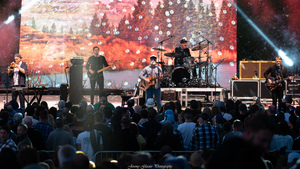
John Coltrane
The Very Best of John Coltrane – The Prestige Era
Concord (Prestige)
Writing a record review on another “very best of album” can pose a challenge when there is already an extensive selection of compilations on the great jazz artists like the legendary tenor saxophonist, John Coltrane. What hasn’t been already written and re-written about this jazz immortal?
With respect to this album review, the point is not to emphasize “the very best of,” but that it’s “The Prestige Era.” This compilation spans recordings from 1956 to 1958, and spotlights the transition of John Coltrane from sideman to bandleader while under the Prestige Records label.
Prestige Records, well-known jazz record label that over the decades have released hundreds of jazz albums from familiar artists of the ’50s and ’60s. Since then, the label was sold in 1971 to Fantasy Records. Concord Records, as of 2005, owns all the Prestige Records and have re-released a fresh perspective on these Prestige jazz masters.
The Prestige years are noteworthy in that listeners today get some early musical insight into the man who will posthumously be canonized by the African Orthodox Church as “Saint John Coltrane.” During this time, Trane found religion and overcame his addiction heroin and alcohol. Bob Weinstock, then head of Prestige Records, funded the release of his first solo album, Coltrane. The acclaimed work with Thelonius Monk at The Five Spot began to unfurl Trane’s own signature style in hard bop, and a breakaway from being another Charlie Parker be-bop copycat, or the side man for Miles Davis quintet.
More classic be-bop style in “I Hear A Rhapsody” and “Freight Trane” with guitarist, Kenny Burrell, where where you can hear the Charlie Parker influence. Smoothly emotive “Soultrane” with the wonderful rhythmic shuffle from Philly Joe Jones. Fast paced and tight with the 1958 recording of Romberg and Hammerstein’s ’20s classic, “Lover Come Back To Me,” with fluttery runs from both Trane and trumpeter, Donald Byrd.
“Nutty,” one of the recordings from Trane’s residency at The Five Spot with Thelonius Monk, shows a certain degree of expressive frantic freedom that Trane was allowed to explore in his solos. Both “Nutty” and the last track, “Bahia,” are a great demonstration of Coltrane’s “sheets of sound” technique – rapid arpeggiations and musical lines that at times have a glissando effect. Moreover, “Bahia” is a noteworthy track to end the compilation because you can already hear glimpses of musical motifs that can be heard in his more experimental work post-Prestige.
This album is probably not the best introduction for those new to jazz, or those wondering why John Coltrane is so revered to this day. It would be several years after the Prestige recordings that Trane’s quentessential album, A Love Supreme, transformed the jazz world, influencing a new generation of musicians as arguably one of the best jazz albums of all time. However, it is a great addition for those looking to peer a bit deeper into John Coltrane’s dawn of greatness.
John Coltrane: http://johncoltrane.com












